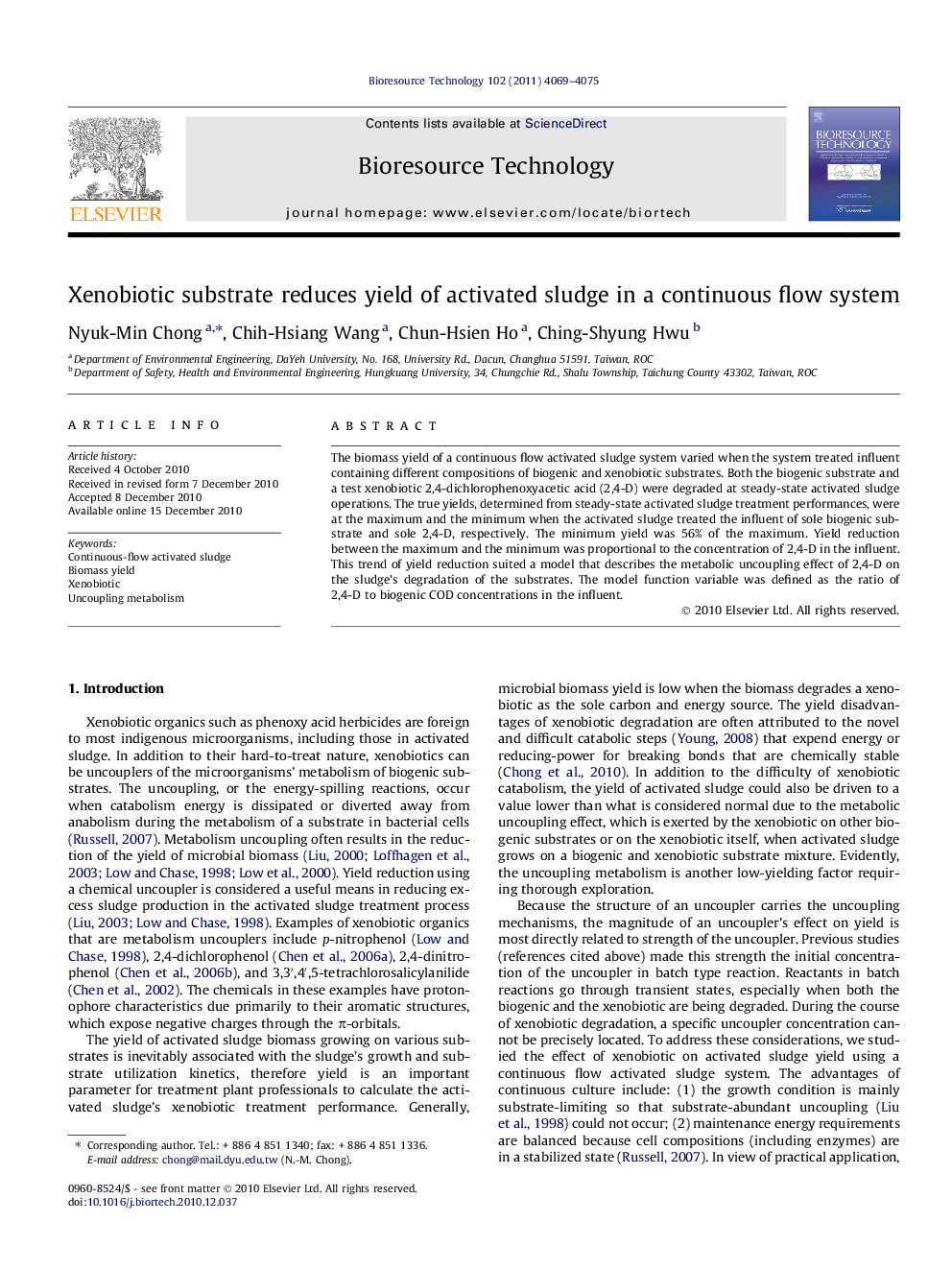| Article ID | Journal | Published Year | Pages | File Type |
|---|---|---|---|---|
| 10395249 | Bioresource Technology | 2011 | 7 Pages |
Abstract
The biomass yield of a continuous flow activated sludge system varied when the system treated influent containing different compositions of biogenic and xenobiotic substrates. Both the biogenic substrate and a test xenobiotic 2,4-dichlorophenoxyacetic acid (2,4-D) were degraded at steady-state activated sludge operations. The true yields, determined from steady-state activated sludge treatment performances, were at the maximum and the minimum when the activated sludge treated the influent of sole biogenic substrate and sole 2,4-D, respectively. The minimum yield was 56% of the maximum. Yield reduction between the maximum and the minimum was proportional to the concentration of 2,4-D in the influent. This trend of yield reduction suited a model that describes the metabolic uncoupling effect of 2,4-D on the sludge's degradation of the substrates. The model function variable was defined as the ratio of 2,4-D to biogenic COD concentrations in the influent.
Keywords
Related Topics
Physical Sciences and Engineering
Chemical Engineering
Process Chemistry and Technology
Authors
Nyuk-Min Chong, Chih-Hsiang Wang, Chun-Hsien Ho, Ching-Shyung Hwu,
